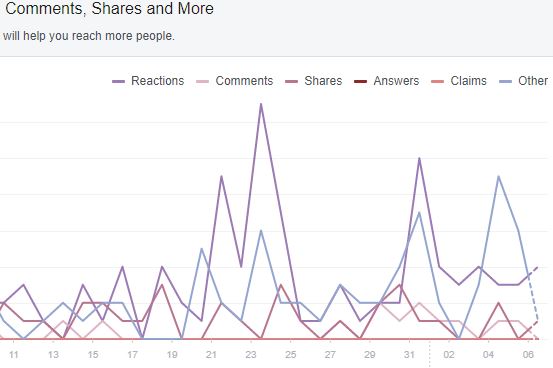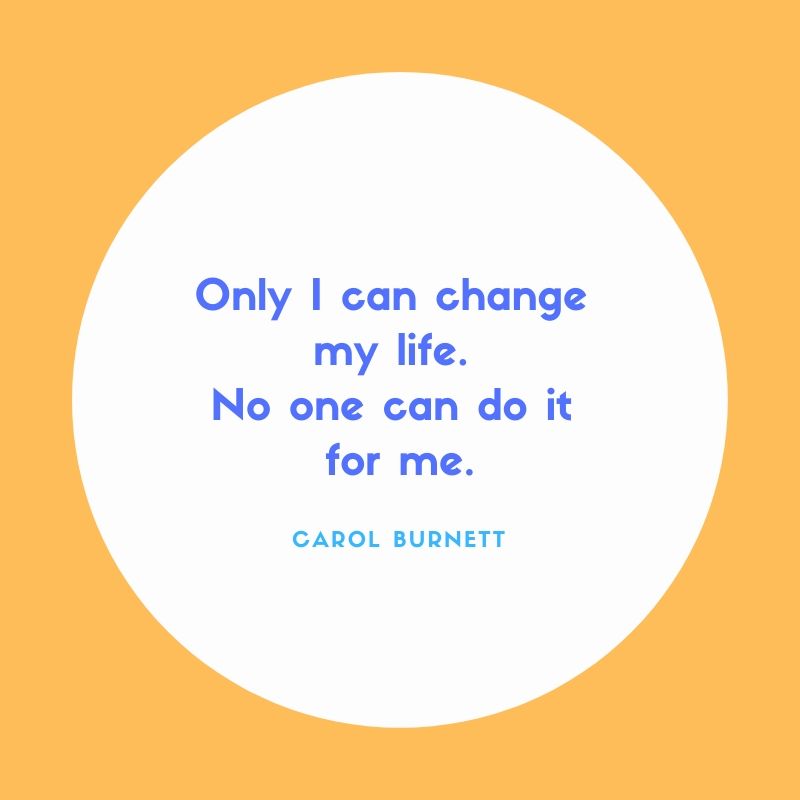
So you’re an appraiser now and you’re doing what it takes to get your name in with the local lenders, established local appraisers, and AMCs. Is there anything else that you can do to get your appraisal schedule full?
Ideas such as car advertising, signing up with Google Local Business and biz.yelp.com, handing out business cards, and telling all your friends to tell their friends can help your fledgling business take flight. Use a mix of these advertising options, whichever ones strike your fancy.
Along with any of the above, you can also implement social media into your advertising mix. You can implement paid social media, take advantage of free social media, or a mixture of both.
In this post, we’re going to take a look at how social media can be used for FREE to boost your name recognition, give your fan base somewhere to congregate, have a little fun with your day-to-day comings and goings, and most importantly, grow your business!
Every media has different methods and must-knows, but to not overwhelm or write a book, let’s focus on using the most popular social media platform: Facebook.
Facebook For Free Advertising!

If you want to try your hand at advertising for free, Facebook is the place to start! While boosting posts (paying Facebook to show your add to more people) might be affordable for you, you can reach a sizable audience through proper use of organic posts (not paid for) on the most popular of all social media! How do you do it? Just like this!
If you’re one of the three in ten American adults who don’t use Facebook but you’re ready to start, you can set up an account with Facebook and use your own page to begin getting your name out there among friends and acquaintances. Keep in mind that personal pages are not intended to represent businesses, as per Facebook’s policies. So don’t use your personal page as an actual business page.
Once you’re comfortable using Facebook, move up to a business page! It’s free!
If you already have a personal account with Facebook, go ahead and set up a free business page. You can choose whether to spend money on advertising or whether to create content that advertises for you without any money leaving your bank account! What are the tricks to creating and posting that content? Let’s look closer.
Consistency in Posting
Have you ever visited a business’s Facebook page and the last update was five years ago? What does that indicate to you? Perhaps you assume that the business is not tech savvy, or that it’s too busy to keep the page updated. Or worse, you might assume that the business owner is too lazy or unorganized to keep their page updated! By consistently posting you can prevent any of these negative assumptions about your business.
Social Media Calendar

To avoid any negative impressions of your business based on your Facebook posting schedule, create a social media calendar. A social media calendar gives you a visual schedule of what you’re posting and when you’re posting it. The calendar gives you a record of the variety of your posts and can include reminders of what types of posts to work into the schedule.
The calendar also serves as a history of what you posted, all on one easy-to-read spreadsheet or calendar, depending on the style you choose to. This social media user prefers an Excel spreadsheet, but you may prefer a different set-up. Take a look at the link above and try out a few!
Social Media Scheduler
Once you’ve settled in on your planning tool, you can use a scheduler such as these listed in this link. These tools are not free, yet they bear considering. I personally have used Hootsuite and Meet Edgar. These tools allow a scheduler to create and schedule content months in advance. I currently prepare one month at a time, then I simply monitor the results as the content automatically posts throughout the month! I adjust next month’s posts according to the previous month’s analytics.
If you don’t plan on posting more than a few times a week and you’re only going to use Facebook, then a scheduler isn’t as necessary. However, if you plan on posting daily or more often and you’re going to use content that you create, a scheduler is extremely helpful. And should you master Facebook and add Pinterest, Instagram, Youtube, or any of the other social medias to your posting schedule, then a scheduler really is a must!
How Often Should I Post?

If you’re already a regular Facebook user, you can probably answer this question without me telling you. Think about the friend who posts several times a day, what’s for breakfast, the slow car in front of them on the drive to work, what they ate for lunch, their mid-afternoon snack, dinner…you get the idea. Then consider the opposite, the friend who posts once or twice a year and never interacts with anyone. Now, this isn’t a criticism of anyone’s posting habits, there are no rules for how often a person can post on their personal page. But think about how these opposites either repel you or prevent you from getting to know your friend via Facebook. Now think about the friend that posts once or twice a day, interesting, usually happy (sad now and then isn’t so bad is it?) posts. Which posting pattern appeals to you the most? Right, the one who posts consistently and no more than once or twice a day.
Let’s translate that into business postings. Studies have shown conflicting info, sorry to say! However, there are some general guidelines.
One study conducted by Hubspot showed that businesses with less than 10,000 followers saw decreases in post engagement if they posted more than five times a month!
Another study, well fourteen other studies to be exact (combined by Red66Marketing), stated that once a day was perfect, twice could be too high.
The takeaway for you? Try a few weeks of posting once or twice a day, then try less often for a few more weeks. Monitor your analytics (more about that later) and adjust your strategy according to the numbers! It might take a few months to figure out, and it will include regular adjustments as audiences and social media interactions change. Just remember to be patient, because the more time you give it, the better your results will be. Facebook takes some time to get reliable results.
Timing

Many companies have studied the right times to post on social media, and they have also conflicted with each other. However, never fear! CoSchedule rounded up fourteen timing studies in an effort to narrow down what the majority of the studies showed to be the best time to post on Facebook (and other social media) is. According to the most popular results, the best time to post on Facebook is between one and four p.m.
Studies aside, how do you find what time your fans (anyone who has liked your page) are on Facebook and how well your posts did compared to each other? Go to your Insights tab at the top of your Facebook Business page and on the left side of the page go to the Posts option.
As you study the times that your fans are on Facebook and compare the posts that did the best and the times they were posted, you can try different posting times. In my case, my company’s fans are relatively steady throughout business hours, although a surprising amount are on Facebook in the middle of the night! I also found that the time the post was posted doesn’t seem to have much of a bearing on the engagement with the post. You might discover the same thing, which means there’s one less metric for you to follow! What matters the most on my company page, and on many other pages, is the type of content!
Content
Jared on his way to teach a CE in Georgia.
Ideas For Content
What are some types of content that you can share on your Facebook business page? You have a lot of options! Let’s look at several.
First, you can post how-to’s, whether they are videos or articles, or both! This kind of post showcases your expertise, giving you credibility and giving your viewers the option of sharing your video or article.
Next, post content that shows the human side of your business. Pictures of you on your way to or at conferences and other industry gatherings, newly earned certificates of training and awards, announcing your 100th client, lunch on the go (just be careful, don’t post too many meal photos, remember our over-poster example above!), and other posts that show potential clients how hard you work and how approachable you are. These posts tend to receive good engagement scores, adding to the credibility of your page.
Now, let’s punch out several more ideas at once: infographics; links to relevant articles; memes; quotes; recommendations for books or sites that you find helpful; upcoming summits and conference; user-generated content (if you have the time to approve it first!); quizzes; surveys; reminders; requests for shares, likes, and reviews; and blog posts.
Whew! There are a lot of ideas there! And that isn’t a comprehensive list of everything you can post on your Facebook page! You might try all of these ideas and more, only to find that a few generate engagement and the rest don’t get any attention. Don’t get discouraged, that’s all part of the social media marketing process!
Blog Posts
Before moving on, one of the content ideas I mentioned needs more explanation. Let’s look into blogging a bit more.
Blog posts, like how-to’s, can establish your credibility as an appraiser. Posts are great for sharing, help build your reach online, and establish your name as you begin to appear on your fans’ own pages on Facebook (and LinkedIn, Twitter, and Instagram etc.). If you’re looking for reliable info on where and to start a blog, take a look at “The Best Blogging Platforms and Blog Sites for 2020.”
Need ideas for what to blog about? Brainstorm!
What subjects do your potential and current customers want to read more about that you can expound on? Peruse other blogs and see what subjects they’re addressing. Do you feel like you can elaborate on some of the subjects? Is there a lack of posts addressing certain subjects that you know a lot about? Keep your list on a document where you can add to it at a moment’s notice. Draw from your list for you next blog post, and always add new ideas to it for future reference.
Another great way to find more information to blog about is using Facebook groups. You probably already belong to appraisal groups online and you might see the discussions taking place on them. Maybe you’re an expert about certain subjects and maybe you want to dive in and add your own commentary to a discussion. Why not use your blog to get a little more information out there? In addition to Facebook you can also check out LinkedIn, Reddit, and appraiser forums on other sites to get ideas about what’s going on in the industry.
Creating Content
Before wrapping up our overview of what content to post on your page, let’s look at simple (the key is “simple”) ways to create content. You can always hire someone to create you content; however, if you have some basic skills you can learn to create much of your content and save yourself some money. Keep in mind that your content doesn’t have to be fancy and crazy-edited.
Simple pictures with wording is effective and easy to start with. My favorite easy-to-use creation sites are the free site Canva (there is also a paid version) and Adobe’s premium content tool. There are many other options out there, and as your skills increase you can upgrade to more advanced programs and try your hand at video and more advanced content if you feel that the time spent on the projects is worth it.
Engagement Goes Both Ways on Facebook!
So now you have fans and other Facebook neighbors responding to your content! Simply continuing to produce content is not enough, you must interact with your audience. Respond promptly to messages and comments. Your customers and potential customers need to feel valued! As Rose Kennedy said,
More business is lost every year through neglect than through any other cause.
Value your customers and make sure they know that you value them!
Likes And Reviews on Your Business Page

Did you know that you can invite friends to like your page? How do you do that? Just go to your business page, go to Community on the left side of the page, then on the right you can invite friends to like your page. If someone likes your posts, you can click on the list of likes and Facebook gives you the option to invite that person to like your page as well.
More important than likes are reviews! Forty percent of U.S. adults check online reviews before making a purchase. In one survey, 68% of respondents said trustworthy reviews influence their shopping decisions, while social media recommendations account for 23%.
Are Facebook reviews important? Yes! How do you get them? Message happy customers and ask them to take a few minutes and leave you a review on your business page (to leave a review, go to the Review tab on the left side of the page). You can also email any of your happy customers (make sure they have given you permission to send them emails) and ask them to leave reviews.
Another idea, whenever you are wrapping up an appraisal with a happy customer, ask them to leave you a review (not just on Facebook, but on Google and Yelp as well).
You might be afraid of bad reviews, and that’s a legitimate worry. However, the vast majority of your reviews should be positive, and a few negative ones are unfortunately a normal part of business. However, if anyone leaves you a bad review, you can contact them and try to work out their complaint. If they seem happy with how the issue was resolved, ask them to consider updating their review. Keep up with your reviews, thank anyone who left a good one, try to work out the bad ones, and your reputation will grow!
Managing Your Advertising Analytics

The minute some of us hear the world analytics we run away screaming. I admit, I used to feel that way. Luckily, Facebook’s analytics are pretty easy to use and understand, and now analytics isn’t so scary anymore!
To find the analytics pages, go to the More tab at the top of the page then go to Insights. Scroll through the various insights and get to know what Facebook has to tell you about your page views, post reach, engagement, and followers, etc. Continue scrolling and every post you’ve posted comes up in an easy-to-read graph. You can dig deeper into likes, reach, page views, etc. using the tools on the left side of the page.
This helpful analytic info tells you what posts are getting the most engagements, what time your fans are on Facebook, age and gender of your fans, your reach, and other info you might find handy. Take what you find the most helpful and change your content and posting schedule accordingly.
Conclusion

After reading this, I hope you have found that Facebook might not be so intimidating. Keep your advertising simple and give yourself time to figure out what content and posting schedule works best for your particular situation and you’ll be a Facebook business page pro in no time!
Good luck! And happy appraising!



Leave a Reply